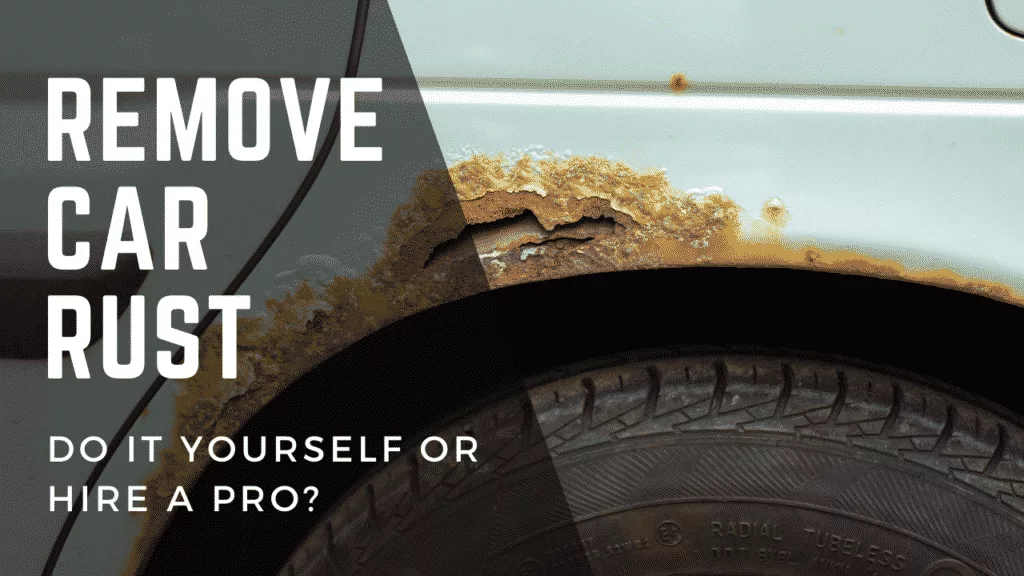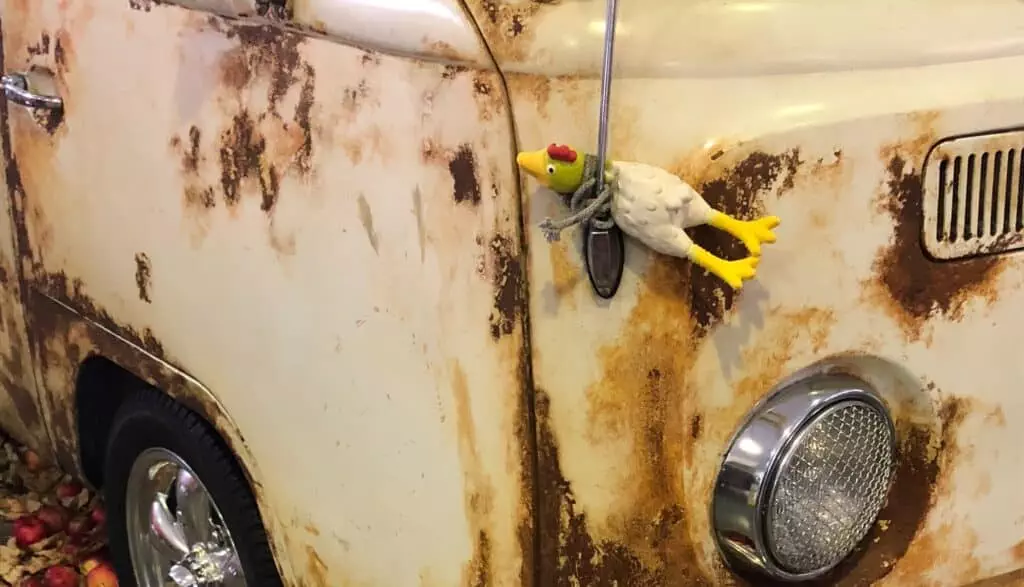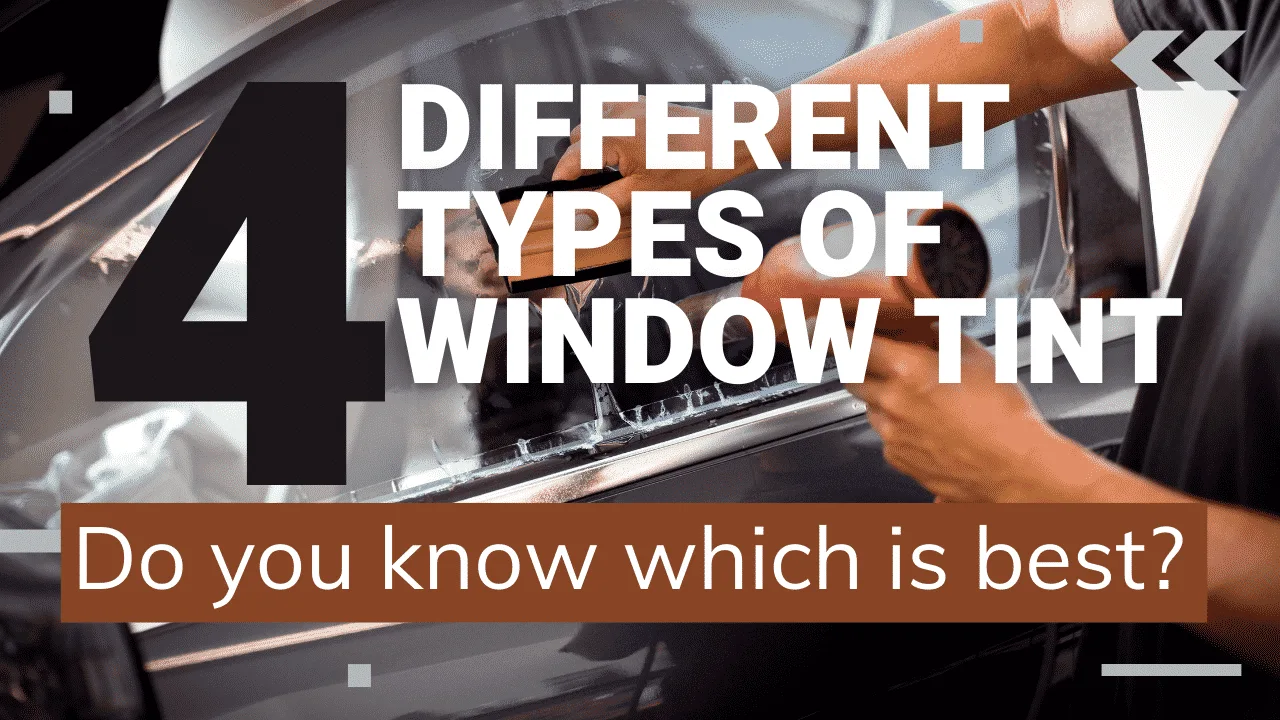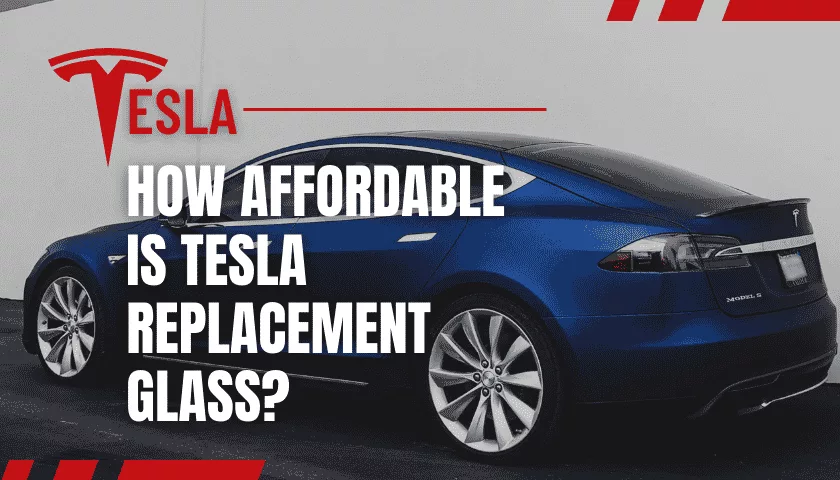
Whether you found an old car in a barn or bought a used car, they’ll probably have some visible and hidden rust spots. This article will discuss how to remove car rust and what causes it. We’ll also cover what can help prevent it from happening. So let’s jump in!
What causes rust in cars?
We’ll start by learning more about what causes rust on the surface and undercarriage of a car. It begins when moisture from rain, snow, sleet, etc., gets into your vehicle’s metal parts. The water then reacts with oxygen in the air, creating iron oxide particles. They’re also known as red rusts since they turn rusty brown when exposed to light.

If you live in cold areas that receive a lot of snow, ice, salt, etc., these conditions will cause even more damage to your vehicles’ surfaces. Salt and other chemicals like road grime and brake dust penetrate the metal pores, driving corrosion faster than expected. If left untreated, corrosion can eat away at the steel until there’s nothing but bare metal underneath. That means if you don’t take care of your car correctly, it could end up being junk before long.
Common areas to check for rust.
I recommend performing a regular annual check of all the following parts of your vehicle, which encounter moisture and road contaminants more often than other parts.
- Wheel wells
- Exhaust Pipe
- Suspension
- Chasis and Frame Rails
- Frame of Windshield
Different stages of rust
Yes. The different stages range from zero to 4. The removal or restoration process will vary depending on the stage. I’ve provided the various stages below to understand and cover the repair process later in this article.
Stage 0 = No Damage
During this stage, there’s no sign of any corrosion whatsoever. Meaning that if you’re looking to restore your vehicle, then you should consider doing so as soon as possible before Stage 1 begins.
Stage 1 = Hidden Damage
There will most likely be visible signs during this stage, such as minor pitting and dents. You may also notice white streaks running through the paint or tiny bubbles. If you want to get rid of these problems, you need to take action immediately. Not correcting the issue can lead to scale rust, requiring body filler to correct.
Stage 2 = Visible Signs of Light Rust
This stage is when the first layer of steel starts to rust. It usually happens after painting the body but before the primer coat dries completely. During this time, you might see black marks appearing on the top of the paint. This stage usually occurs after the first year of ownership when water has been allowed to sit on the car’s body for long periods.
Stage 3 = Medium Rust Damage
The third rusting stage is where the metal underneath the paint becomes exposed. The damage caused during this stage could range from mild to severe, depending on the severity of the problem. At this point, surface rust will be present, and you’d probably want to call a professional because removing all traces of visible damage would require extensive work.
Stage 4 = Heavy Damage
The fourth stage of rusting is severe enough that it requires immediate attention. Penetrating rust occurs during this stage and can affect an entire panel or the entire frame of your car. If left untreated, this final rusting stage could cause significant structural integrity issues with the vehicle’s frame and possibly involve replacing the entire chassis.
How to stop car rust from occurring
So now that we know why rust forms, let’s learn how to prevent it, there are many ways to do this, and each one comes with its own set of pros and cons. Below are some methods that have proven effective over the years.
Wash your car regularly.
Taking your vehicle to the car wash helps remove dirt particles and other contaminants like road salts that can accumulate on the paint job. However, washing your car too often can accelerate the rate of rust formation due to increased exposure to moisture. So instead, experts recommend washing your vehicle every two weeks.
Keep your car dry
While washing your car is essential, keeping it dry is another preventative measure against rust. Make sure not to park your vehicle under trees or near bodies of standing water. If you cannot park in a garage, try using a high-quality car cover to protect the paint from rain.
Use an anti-rust coating.
Anti-Rust Coatings are specifically used to protect against rust by filling in tiny cracks and crevices in the metal. But, of course, if you don’t like cleaning your car yourself, you can always opt for an auto detailing service instead. These services typically use special chemicals to protect against rust while they clean up your vehicle. Some even offer free waxes and polishes along with their services!
Avoid exposing your car to saltwater.
Saltwater is corrosive, and if it gets into tiny openings, it can quickly eat away the protective coatings on the paint finish. Saltwater also causes corrosion inside the engine compartment, leading to expensive repairs down the line. So keep any saltwater out of your car by storing it inside until needed.
How to remove car rust
Now that we’ve covered the different signs of rust and rust inhibitors. Let’s dive into fixing them. As mentioned, some of the types of rust may require professional services. Still, we’ll also talk about how you can remove car rust that isn’t too extensive.
Professional removal companies
A professional rust removal company will be able to identify what type of rust has formed based on the coloration of the affected area. They will then apply a solution to exposed metal surfaces that will cause a chemical reaction and dissolve any rust.
Next, they will apply a sealant to fill holes created by the dissolved rust. The process usually takes anywhere between 30 minutes and several hours, depending on the severity of the damage. Once complete, the professionals will inspect the quality. Finally, they will polish the vehicle’s entire exterior to restore its original shine.
Common types of rust removed by professionals.
- Pitless Rust Repair – A popular method used by professionals involves sandblasting the area first before applying a primer/sealer. The goal here is to create a smooth surface, so the sealer will adhere better when applied. Once complete, apply multiple coats of clear coat to ensure maximum protection.
- Scale Rust – A professional will tackle this advanced corrosion process with a special abrasive wheel or grinding tool.
- Penetrating Rust – It’s not possible to remove rust from metal with this level of damage. Professionals will remove any body panels with damage then replace and paint them.
DIY materials to remove common rust spots like a pro
We recommend having a professional fix your car to prevent causing additional damage by accident that could end up costing you more money. However, if you’re a DIYer and don’t mind using a little elbow grease, I recommend checking out Haynes.com for great step-by-step instructions. In addition, they recommend having the following list of supplies before getting started.
- Angle grinder and flapper wheels
- Wire brush wheel
- Fiberglass epoxy gel
- Body filler
- Various grade sandpaper (80, 400, 600, 1000, 2000)
- Sanding block
- Primer and base coat paint
- 2k clear coat paint (available in aerosol cans)
- Masking materials (paper and tape)
- Rubbing compound
- Mineral spirits
- Rags
- Tack cloth
Other questions people asked
- How fast does rust spread on a car? Rust is like cancer and will spread fast if not treated. The average time it takes to spread and destroy a body panel can be a month to a year. However, if the paint has orange or yellow on it with bubbling, it won’t be long before you’ll need to replace the panel.
- Can you use Pepsi to take the rust off your car? It is possible to use Pepsi or Coke, but the damage will need to be light, and you’ll need to leave the Pepsi on the site for an hour or longer before brushing it off.
- What can I spray undercarriage to prevent rust? There are several rust inhibitors on the market to help protect the bottom of your car from rust. I recommend checking out the undercoating spray made by 3M.
- Is it worth removing rust from a car? It’s best to address rust as soon as you see it. Waiting too long will only make the process more expensive and complicated.
- How much does rust removal cost? Rust removal costs vary depending on the severity of the damage. However, the average price for removing rust from a vehicle is $1,000.
- Is there a cheap way to remove rust? As mentioned above, it’s possible to use Pepsi or Coke. In addition, it is possible to remove rust using baking soda and lemon juice. Still, the results vary when it comes to effectiveness.
- What’s the difference between rust remover and rust dissolvers? Rust removers are chemicals that dissolve the rust from metal surfaces. Rust dissolvers are chemicals that remove the rust from metal surfaces without damaging them.






